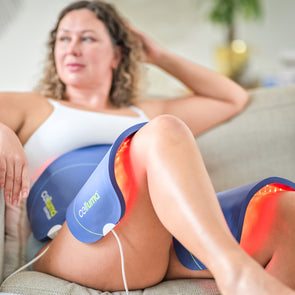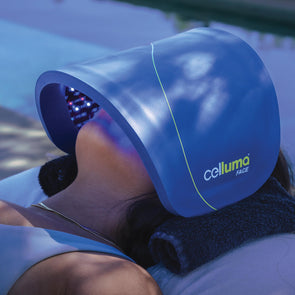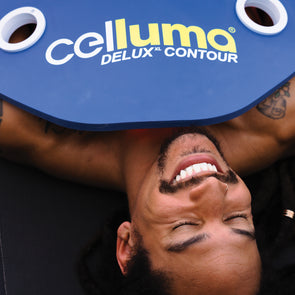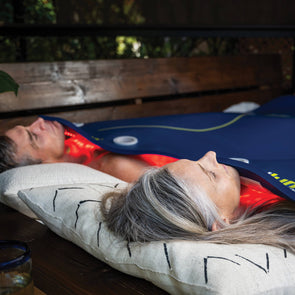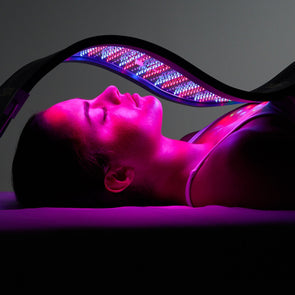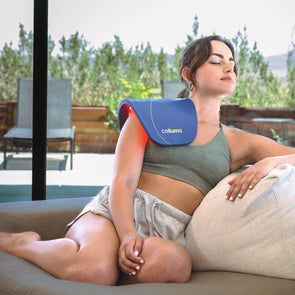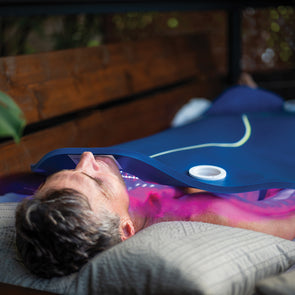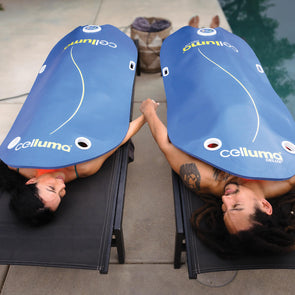LED Light Therapy Wavelengths: Everything You Need to Know

LED Light Therapy Wavelengths: Everything You Need to Know
If you are new to light therapy, or even if you’re not, some of the most frequently asked questions we get are about wavelengths. What are they? How deep do they go into the tissue? What wavelengths does Celluma use and why is that important? What is the most effective wavelength? What about colors other than red and blue?
If any of these questions have crossed your mind, we’re here to give you the answers, backed by clinical research so you can make the best purchasing decisions when it comes to light therapy. We understand that selecting LED light therapy devices can be confusing and we appreciate the opportunity to provide some clarity to this process. Whether you’re looking for an effective acne treatment or simply something to rejuvenate your skin, you need to understand how to select a device that is going to best address your concerns.
Your skin care is an important part of your health care routine, and we want to make sure you get your most pressing LED light therapy questions answered. Especially questions related to what color wavelength is best and most effective for treating skin, hair, and pain conditions.
The Basics
Let’s get started with some general questions about wavelengths before we get to the more advanced material.
The benefits of LED light therapy are dependent upon several factors, one being the correct wavelengths (perceived by humans as color).
First, it’s important to use wavelengths (colors) that are absorbable by the mitochondria, meaning wavelengths that can penetrate the skin deep enough to reach the targeted cells in order to achieve the desired treatment result, whether that’s reducing fine lines and wrinkles, treating acne, or restoring thinning hair.
Proven Wavelengths Of Light Energy
For effective treatment of skin, pain, acne and hair loss issues, the only proven wavelengths are blue, red and near infrared. These wavelengths are in the visible range to just outside the visible range - from approximately 400-1000nm. Other wavelengths, including green, yellow, orange, and amber are not scientifically supported for a variety of reasons.
One of the easiest ways to explain light therapy is to think of it as photosynthesis for mammals. Just like plants, scientific research has shown that human bodies can absorb light particles called photons and transform that light energy into adenosine triphosphate or ATP.
As we age, the ability of our cells to produce energy diminishes. Cellular energy production is also affected by disease and poor lifestyle habits. Light therapy actually increases cellular energy! It’s also important to understand what red light and near infrared light therapy is not. It is not the same light energy used in tanning booths and it does not expose your skin to harmful UV wavelengths.
Keeping in mind that the longer the wavelength the deeper the penetration, this would indicate that red light (color), wavelengths used to upregulate the mitochondrial process in cells, are between 630 - 700nm and there will be very little difference in how cells respond to a 630 wavelength versus a 660 wavelength, meaning both will be effective, however a 660nm may reach cells at a slightly deeper depth.
Likewise, for near-infrared, the ideal range is 770-900nm. Most of the better devices use wavelengths in the 800-900 range for their ability to penetrate so deeply below the surface of the skin and into the sub-cutaneous layer.
In Celluma Light Therapy devices, we use 880nm which is the near-infrared wavelength used by renowned researcher Dr. Harry Whelan in his research for NASA on the treatment of wound healing in many studies.
Humans see blue and red wavelengths as blue and red light. However, near-infrared wavelengths are invisible to the human eye. Red wavelengths are used to benefit a variety of skin conditions and reduce inflammation, redness, and puffiness. Additionally, red wavelengths increase blood flow, moving toxins out of the body, and help generate new healthier tissue.

Red Light vs. Blue Light Therapy
Red light therapy is often used for various skin treatments and has been studied for its potential to stimulate collagen production, improve skin texture, reduce inflammation, and promote wound healing. Its ability to reach deeper layers of the skin allows it to potentially affect cellular processes and stimulate beneficial changes within the skin’s structure and function. Blue light therapy is known for its effectiveness in treating acne by targeting the bacteria that contribute to breakouts within the skin’s superficial layers. Based on clinical research, Celluma devices use blue light at 465nanometers.
How deep does blue light energy reach?
Blue light energy typically penetrates the skin at a shallow depth compared to other types of light energy such as infrared or red light. Blue light, in the range of 400 to 495nanometers, generally penetrates the skin to the depth of the epidermis, the outer most layer of the skin. Its ability to reach deeper layers is limited, which is why it is often used for targeting skin concerns closer to the surface, such as acne.
How deep does red light energy reach?
Red light energy, typically in the range of 630 to 700 nanometers, can penetrate the skin more deeply than blue light. Red light can reach deeper layers of the skin, including the dermis, which is located beneath the epidermis. Generally, red light can penetrate the dermis, reaching approximately 5 to 10 millimeters below the skin surface. Based on clinical research, Celluma devices use red light at 640 nanometers.
How deep does near-infrared light energy reach?
Near-infrared (NIR) light has greater penetration capabilities compared to both blue and red light. Near-infrared light falls within the range of approximately 700 to 1,000 nanometers. NIR light can penetrate more deeply into the skin and tissues, reaching even beyond the dermis into the subcutaneous tissue. This means light energy penetration of up to 25mm! This deeper penetration of near-infrared light is one reason why it’s utilized in therapeutic applications such as pain management, wound healing, muscle recovery, and skin rejuvenation. Based on clinical research, Celluma devices use NIR at 880 nanometers.

What’s the difference between near and far infrared?
On the electromagnetic spectrum, infrared wavelengths are between 700 nm to 1mm and divided into 3 ranges: near, mid, and far-infrared. Only near-infrared wavelengths are used in Celluma because these wavelengths are capable of being absorbed by the mitochondria to increase ATP so compromised cells do their job more effectively. Mid and far infrared cannot penetrate the cells and cannot be absorbed by the mitochondria, so these wavelengths do not upregulate mitochondrial activity. For this reason, they are not used in LED devices. However, mid and far infrared are used in heating lamps and in saunas as they emit thermal energy which can have a detoxifying effect on the body. The near-infrared wavelength used in Celluma does not emit thermal energy.
With the wide spectrum of important options to consider, having as much information as possible at your fingertips is key. Understanding which wavelengths are clinically proven and effective allows you to make an informed purchasing decision. And whether you are looking to address skin issues, pain conditions, or hair loss, make sure you find the right device that addresses all your needs: Celluma Light Therapy!



